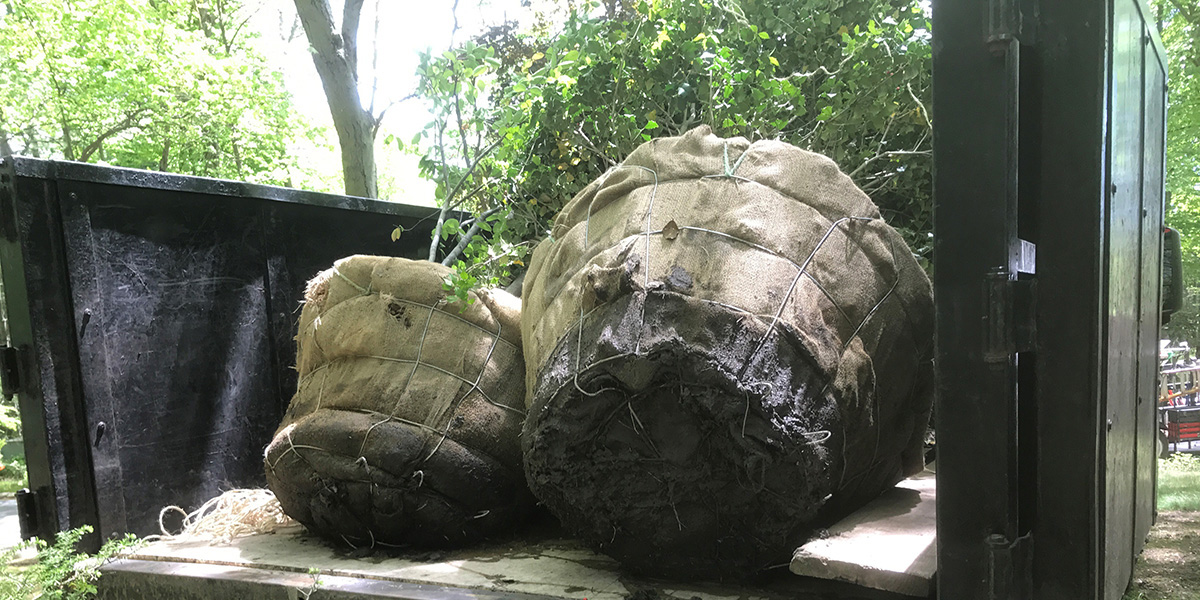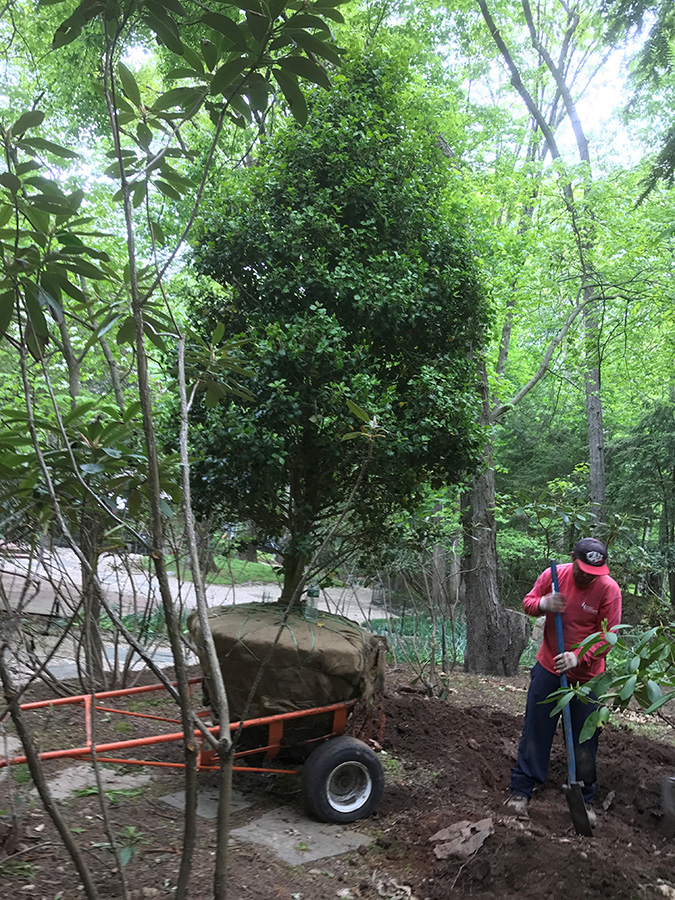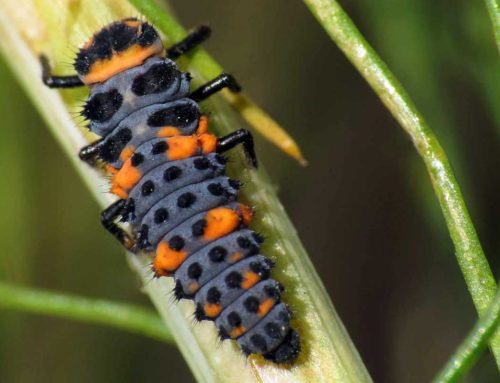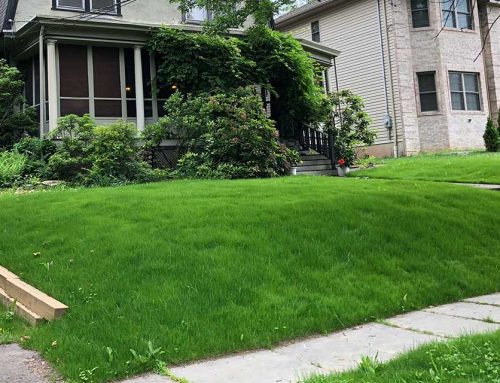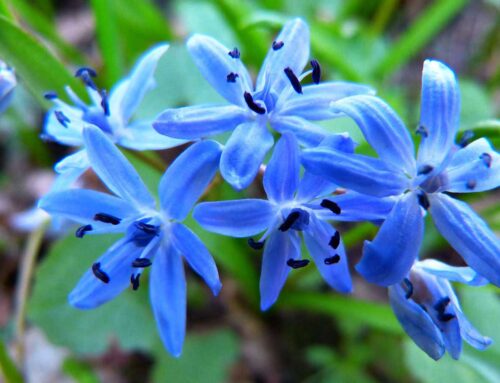“Native Tree Planting in Bergen County”
One of our clients who has a rather expansive piece of property in Bergen County wanted to implement some screening at specific locations that were somewhat open to the outside. Being a woodland setting, they wanted to restore the areas to a natural habit.
To satisfy these desires we chose to implement an Ilex opaca American Holly, a native plant, as the foundation plant around which smaller native species can also be introduced back into the landscape. Ilex opaca, commonly called American holly, is an upright, pyramidal, evergreen tree that slowly matures to 15-30′ in cultivation, but may reach 50′ tall in the wild. It is native to the eastern and central U.S.
The flowers are greenish white, small, borne in late spring in short pedunculate cymes from the axils of young leaves or scattered along the base of young branches.
The flowers are pollinated by insects, including bees, wasps, ants, and night-flying moths. The berries are reputedly poisonous to humans, but are important survival food for birds, who will eat the berries after other food sources are exhausted. The tree also forms a thick canopy which offers protection for birds from predators and storms. Songbirds including thrushes, mockingbirds, catbirds, bluebirds and thrashers frequently feed on the berries.
At another location we planted another native tree, Shadblow serviceberry (amalanchier canadensis).
Serviceberry is one of the first native trees to bloom each spring. Showy, fragrant white flowers bloom even before the leaves appear. The nectar attracts butterflies and other pollinators. Flowers give rise to purple-black berries relished by both songbirds and people. Flavorful berries can be used in jams, jellies and pies. The colorful fall foliage is a blend of orange, gold, red and green.
Easily grown in average, medium, well-drained soil in full sun to part shade. Tolerant of a somewhat wide range of soils. Shadblow serviceberry is a dense multistemmed shrub or small tree that can reach 20 feet tall.
Shadblow serviceberry got its common name because it fruits in June “when the shad (a northern fish) run.” All the serviceberries make good small landscape trees or multistemmed shrubs. Serviceberry is a common understory tree in southeastern forests of North America. The wood of serviceberry is among the heaviest in the U.S., and would be more valuable if the trees grew larger.
Serviceberry’s fruit is used to make pies and sweetbreads and can be dried like raisins. Cherokees used serviceberry tea to aid digestion, and children who had worms were given baths in serviceberry tea. Native Americans used the tree’s straight wood to make arrow shafts. Francois Michaux wrote of serviceberries being available in Philadelphia markets, but only children bought them. Serviceberries have good fall color and the bark is grayish and ornamental. It becomes ridged and furrowed as the tree ages. Shadblow serviceberry is an excellent choice for a naturalized garden, where it can spread naturally by suckering. It also makes an attractive specimen plant or can be used in front of an evergreen background.
Large Caliper and Specimen Tree Services in Bergen County
Lincoln Landscaping “The Natural Choice”
Mike Kolenut President & CEO
https://lincolnlandscapinginc.com
(201) 848-9699

